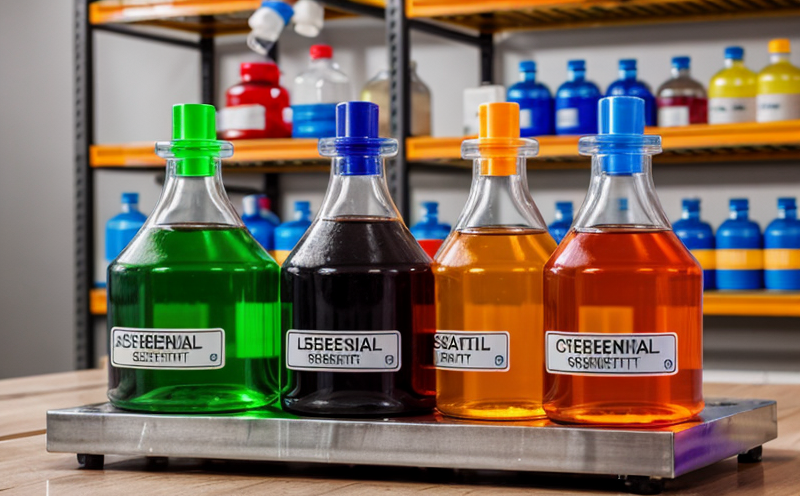PBDE (Polybrominated Diphenyl Ethers) Testing in Materials
Consumer products and electronic devices often contain flame retardants to enhance their fire resistance. Among these, PBDEs have been widely used until their production was phased out due to environmental concerns. Polybrominated diphenyl ethers (PBDEs) are a group of brominated flame retardants that can be found in various materials, including textiles, plastics, and electronics.
Although the manufacturing and use of certain PBDE congeners have been restricted by regulations like the European Union's RoHS directive, they remain present in many existing products. This makes it crucial for manufacturers to monitor these substances in their supply chains and final products.
PBDE testing is essential for ensuring compliance with global regulations regarding restricted substances and hazardous materials. The primary goal of this service is to identify the presence and concentration levels of PBDEs in various materials, helping companies comply with regulatory requirements such as RoHS, REACH, and others.
Our laboratory uses cutting-edge analytical techniques including high-performance liquid chromatography (HPLC) coupled with mass spectrometry (MS/MS), which allows for precise quantification of PBDE congeners. This approach ensures accurate detection even at trace levels.
The testing process involves several key steps: first, appropriate sampling and preparation of the material to be tested; then, analysis using advanced instrumentation; finally, interpretation of results against relevant standards and guidelines. By adhering strictly to international standards such as ISO 17025 for laboratory accreditation, we guarantee reliable and consistent test outcomes.
Our team of experts works closely with clients throughout the entire testing process, providing guidance on sample selection, ensuring proper preparation techniques are followed, interpreting results accurately, and offering recommendations based on findings. This collaborative approach ensures that our clients receive comprehensive support beyond just raw data.
| Step | Description |
|---|---|
| Sampling | Select representative samples from different parts of the material. |
| Homogenization | Mix the samples thoroughly to ensure uniformity. |
| Extraction | Use solvents suitable for extracting PBDEs from the matrix. |
The extracted compounds are then analyzed using HPLC-MS/MS, which separates and quantifies individual PBDE congeners. This method not only detects but also distinguishes between various types of PBDEs based on their unique chemical structures.
After completing the analysis, our team provides detailed reports outlining detected PBDE levels in parts per million (ppm) or parts per billion (ppb), depending on client preference. These reports include comparisons against specified limit values set forth by applicable regulations.
Scope and Methodology
| Parameter | Description |
|---|---|
| PBDE Congener Identification | Detection of specific PBDE congeners such as BDE-209, BDE-153. |
| Quantification Limits | Detection limits down to 0.01 ppm for major congeners. |
The scope of our PBDE testing service includes assessing the presence and concentration levels of various PBDE congeners in different types of materials used across consumer products sectors. The methodology follows internationally recognized standards, ensuring accuracy and reliability.
We employ sophisticated analytical tools designed to handle complex matrices typical in real-world applications. Our lab adheres strictly to ISO 17025 requirements for metrological traceability and uncertainty evaluation, providing clients with confidence that their results are accurate and repeatable.
Benefits
By leveraging our expertise in PBDE testing, companies can safeguard their reputations by demonstrating commitment to sustainable practices. Early identification of restricted or hazardous substances allows manufacturers to take corrective actions promptly, avoiding potential legal issues and fines.
Moreover, adhering to regulatory standards enhances product safety while fostering trust among consumers who value eco-friendly choices. The ability to prove compliance reduces risks associated with non-compliance penalties.
The insights gained from our testing can inform strategic decisions related to material selection and formulation optimization. This proactive approach enables businesses to stay ahead of emerging trends in sustainability and regulatory changes.
Eurolab Advantages
At Eurolab, we offer unparalleled expertise in chemical safety testing across diverse industries. Our comprehensive suite of services supports clients at every stage of the product lifecycle—from development through manufacturing and distribution.
Our dedicated team comprises highly qualified professionals with extensive experience in environmental analysis and toxicology. They stay updated on the latest developments in regulatory requirements, ensuring that our methods remain current.
We invest significantly in state-of-the-art equipment to deliver precise and accurate results consistently. With multiple locations globally, we provide local support tailored to regional needs while maintaining a uniform standard across all sites.
Our commitment to quality is reflected not only in our technical capabilities but also through robust quality management systems certified according to ISO 17025 standards. This ensures that every aspect of our operations meets strict criteria for reliability and accuracy.





